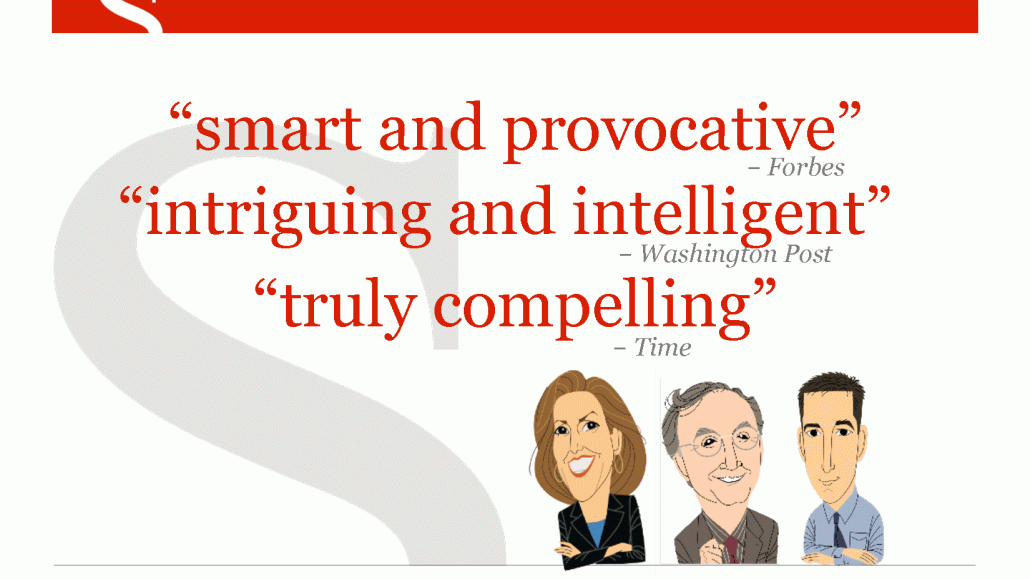
Pioneering an industry is a tough game, especially when you watch many others enter, catch-up and surpass you. After introducing the concept of online-only, high-quality journalism 17 years ago, Salon is standing. Once an insurgent, Salon is now a legacy Web media brand struggling to adapt to a harsh climate for publishers.
Founded by David Talbot in 1995, with some financial help from Adobe and Apple, Salon found itself thrust into the vanguard of publishing, forging new online models. It went public in June 1999, which speaks to the era when an online literary pub would test public markets. In that same year, Salon purchased the first online community, The WELL, portending the rise of social media. Salon also experimented with nonstandard ad units, which it called ultramercials where readers wanting to get content without buying a subscription could get a 12-hour pass by clicking through four separate panels of a commercial. In other words, interactive ads in its infancy.
The dot-com crash wasn’t kind. In 2001, it shifted to a paywall model, hedging against a receding online ad market. By 2002, Salon was delisted from Nasdaq. For the last decade, Salon has experimented with various models, paring down expenses and “revamping staff priorities so that writers could simply produce more,” wrote editor-in-chief, Kerry Lauerman in a February blog post.
It retrenched, slashing staff and groping for a workable business model at a time when online advertising struggled. The early embrace of a paywall might have saved Salon, according to Lauerman. Salon charged $30-$35 per subscription, surpassing 100,000 subscribers by 2004.
“It was an enormous pain back then to create a new revenue stream when online advertising disappeared overnight,” Lauerman said.
It came at a cost. Salon sacrificed its role as, well, a salon open to everyone. It was mostly absent from the back-and-forth of the Web, particularly with the explosion of digital media. Subsequent metering models have found a better balancing act to Salon’s blunt force approach, but it has moved back to an all-advertising model.
“That’s the ugly part of being the pioneer: we had to try out these things because no one had done it before us,” said Lauerman. “Now people can look at the NYT and see what they did.”
A decade later, Salon is still trying to find its footing. While still respected for its commentary —Alex Pareene’s Hack List has become an industry must-read — it isn’t exactly a juggernaut. ComScore pegs its monthly traffic at 2.7 million uniques in June 2012, down 10 percent from a year earlier. At that size, with its focus on culture and lefty politics, Salon isn’t going to warrant much attention from ad buyers. In fact, ad revenue for its last fiscal year came in at $3 million, down $500,000 from the previous year. Despite its early embrace of subscriptions, Salon is more ad dependent than ever, with 79 percent of its revenue from advertising. It recently shuttered online community site TheWell.com, which charged $150 per year.
Compare that experience with The Atlantic, a legacy media brand that initially struggled online. The Atlantic has since fully embraced the Web with well-read blogs and a snappy site. The vanguard publication drew 3.6 million uniques in April, and according Scott Havens, svp of digital and finance for The Atlantic, 40 percent of referral traffic comes from social media. In other words, The Atlantic is proving you can teach an old dog new tricks.
Salon is now left to rebuild. It recently scrapped its legacy content-management system that dated back over a decade in favor of WordPress. On the management side, in June it elevated Cindy Jeffers from CTO to CEO. She led the creation of the HuffingtonPost.com and helped build its CMS prior to joining Salon in May.
“The key to our future is that collaboration and the media innovation out of those collaborations,” Jeffers said. “What I’m hoping is that we become a tech leader, where we build and experiment on new platforms — social and points of data and new ways of interacting with stories.”
Salon has tacked away from the current vogue for aggregation and “listicles” of the Buzzfeed variety. Instead, it has returned to its roots of thoughtful, original content.
“The quality [to] quantity ratio has to be right,” Lauerman said. “Readers are coming to us for definitive takes and smart reporting. When we sacrificed that, by speeding up by doing more quick posts, the payoff was negligible.”
Jeffers says the company is refocusing on direct ad sales. In April, Salon brought in Matt Sussberg from Wenner Media as vp of sales to develop integrated interactive approaches. There is vague talk of “innovative products” rolling out in the months ahead.
“One of my main goals is to make us a news innovator and a leader in that space,” Jeffers said.
More in Media

Earnings from social and search players signal that AI will be a long-play investment
Giants like Google, Meta and Microsoft say investors and advertisers might have to wait longer for AI to generate a better return on investment.

Why some publishers aren’t ready to monetize generative AI chatbots with ads yet
Monetization of generative AI chatbot experiences is slow going. Some publishing execs said they’re not ready to add advertising to these products until they scale or can build a subscription model first.

Media Briefing: Publishers who bet on events and franchises this year are reaping the rewards
Tentpole events and franchises are helping publishers lock in advertising revenue.





